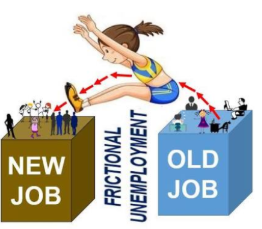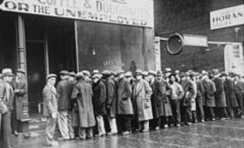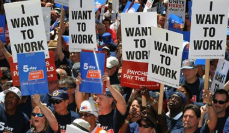Lesson 5.4: Causes and Calculations of Unemployment
1/15
Earn XP
Description and Tags
Flashcards made from a presentation segment created as a lesson on unemployment.
Name | Mastery | Learn | Test | Matching | Spaced |
|---|
No study sessions yet.
16 Terms

Unemployment
The state of not being employed; can be both an individual and nationwide issue
Tracked by economists to aid economic reccovery or growth
A zero percent rate is impossible due to the three types of this having at least some people

Structural unemployment
Unemployment created or depleted by changes in the economy, such as those in the telecommunications or healthcare sector
Results from industrial reorganization or technological change
Skills, location, or wage demands typically mismatch the requirements of the job
Job training
A way to address structural unemployment, allowing workers to gain skills in response to structural changes
However, this takes time and does not ensure high-wage jobs
Collective bargaining
Union activity that negotiates on behalf of all workers
Labor strike
Union activity that results in a collective refusal to work

Labor union
Organization within a place of employment that can raise wages or benefits
While this is good for workers, it can also cause structural unemployment as higher wages create surpluses

Frictional unemployment
Unemployment created by the constant changes in the workforce
Measured as the time workers spend searching for work — always exists with searches for a first or better job
Is typically brief in periods of low unemployment

Cyclical unemployment
Unemployment that relates to the trends in growth and production that occur within the business cycle
Minimized during business peaks as output is maximized
May grow during recessions where workers are laid off
Natural rate of unemployment
The rate of employment that arises from the effects of frictional and structural unemployment
Is inevitable as the minimum rate that the actual rate fluctuates around
Is never zero
Full employment
The rate of unemployment when cyclical unemployment does not exist, ignoring the natural rate of unemployment

Seasonal unemployment
Unemployment that occurs when industries slow or shut down for seasonal shifts in production schedules, such as in harvesting industries or holiday seasons
Typical part of a healthy economy
Labor force
The total amount of people who are employed and unemployed but looking for a job in a country

Unemployment rate
The percentage of people in the labor force who are unemployed
Determined by the Bureau of Labor Statistics through a monthly household survey of 60,000 families
Adjusted for seasonal unemployment for more accurate comparisons across months, but can vary across different demographic groups
Rises during recessions and falls during expansions
Discouraged workers
Workers who could work but have given up seeking employment due to the state of the job market
Not counted in the unemployment rate; this may lead to an understatement in the amount of people who want to work but are unable to find jobs

Marginally attached workers
Workers who would like to be employed and have looked for a job in the past but are not currently looking for work
Underemployed workers
People who would like to work more hours than they do or are overqualified for their jobs